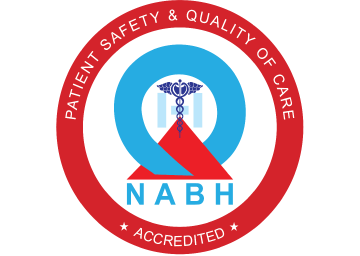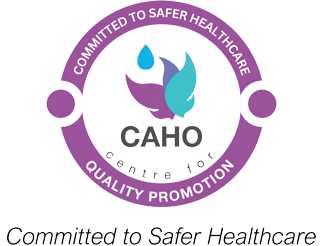ABOUT
Scoliosis is a sideways curvature of the spine that makes the spine look more like an "S" or "C" than a straight "I". This sideways bending is almost always associated with a rotational component which makes the chest and back prominent on one side.
The normal spine is curved in the front to back direction with a forward curvature at the neck and the lower back, a backward curvature at the chest and the level of the pelvis. The spine does not have any normal sideways bend.
Scoliosis can occur due to a multitude of reasons Idiopathic - The exact aetiology is not known, hence called "idiopathic". However, this is the most common type of scoliosis.
- Idiopathic scoliosis can run in families.
- Congenital - Abnormalities in the formation of spinal vertebrae during the fetal stage causes a spinal deformity as the child grows. Uneven growth of the vertebrae causes the spine to bend towards one side.
- Neuromuscular - Some children have nerve or muscle diseases that cause spinal deformities, for example, polio, cerebral palsy, or myelomeningocele. The uneven muscle pulls on the spine cause abnormal curvature.
The occurrence of scoliosis cannot be prevented; however, the progression of the deformity can be prevented by timely intervention. It should be remembered that scoliosis does not occur because of past sins, consanguineous marriages or carrying heavy school bags.
SYMPTOMS AND DIAGNOSIS
The deformity when noticed is usually due to the cosmetic disfigurement. Uneven shoulders or waistline, a prominent chest wall on one side, leaning slightly to one side or a hump on one side of the back are the most common findings in a child with scoliosis. Pain rarely occurs in scoliosis, but it may occur in large curves or curves due to an underlying neurological abnormality. Occasionally long-standing severe cases may have difficulty in breathing due to impaired cardiac and chest wall function.
Adults with moderate or severe scoliosis can have progressively worsening curves which cause cosmetic disfigurement, back pain and in the worst cases, difficulty breathing. Treatment after the curve has already become severe in adulthood is much less successful than treatment during childhood or adolescence. By finding progressive curves early, we hope to keep them from becoming problems in adulthood.
The diagnosis is very easily confirmed by just clinical examination but investigations are necessary to evaluate the severity of the curve and decided on the best treatment. Primarily, X-rays of the entire spine with standing stretch and sideways bending positions will be taken. Usually, an MRI is part of the evaluation to rule out any birth defects in the spinal cord and nerves. Complex deformities may require a CT scan to visualise the bone configuration.
Following this extensive assessment, the doctor will then decide to treat the condition with bracing or surgery depending on age, the severity of the curve, underlying disease processes and degree of breathing difficulty.
TREATMENT
Both non-surgical and surgical options are available for treating Scoliosis depending on the stage of the problem.
- Mild curves (less than 20°) just have to be watched until growth maturity (child stops growing) to see if they are progressing. The doctor will want to recheck the curve on a regular basis to see that it is not progressively getting worse. You may be asked to return every 3 to 6 months for re-examination.
- Mild to moderate curves (between 25° and 45°) which do not appear to be progressing very quickly can be treated with a brace. The scoliosis brace is designed especially for the patient depending on the particular curve. It holds the spine in a straighter position while the patient is growing thus trying to partly correct the curve or prevent it from increasing. A bracing program may help to avoid surgery. The patient will need to wear the brace almost all the time until the end of growth. This will be followed by specific exercises and will require close monitoring by your surgeon.
Surgery is usually required in children with large curves with cosmetic deformity, rapidly progressing curves (even if they are small initially) or when bracing fails to prevent curve progression. Pain or the presence of neurological deficits are other indications for surgery. Your surgeon will decide on whether your child requires surgery.
- Posterior Fusion- It is the most common operation done for idiopathic scoliosis. In the posterior fusion, the spine is operated on from behind with an incision straight down the back. Various types of rods, hooks, wires or screws are used to partially straighten the spine and hold it fast while the bone fusion occurs. For most of these operations on idiopathic scoliosis, a brace is used postoperatively for a few months.
- Anterior Fusion- In the anterior fusion, the spine is operated on from the front, or side. Anterior fusion is used in some special instances of idiopathic scoliosis. An incision is made along a rib and/or down the front of the abdomen to obtain access to the front of the spine. Bone graft from the hip, rib or bone bank is used for the fusion. Screws and washers attached to a rod may be used to straighten the spine.
- Anterior and Posterior Fusion- Some special cases of spinal deformity require both an anterior (front) and posterior (back) operation. Usually, these can be done on the same day, but sometimes must be done at separate operations spaced 1-2 weeks apart. Following surgery, patients walk with a brace by the fourth to the fifth day and are discharged from the hospital within 10 days. The child can rapidly resume their daily activities. The child can start attending school within 6 weeks in most cases. A return to some sports is possible in 6 to 9 months after surgery.




